#showa era houses
Text
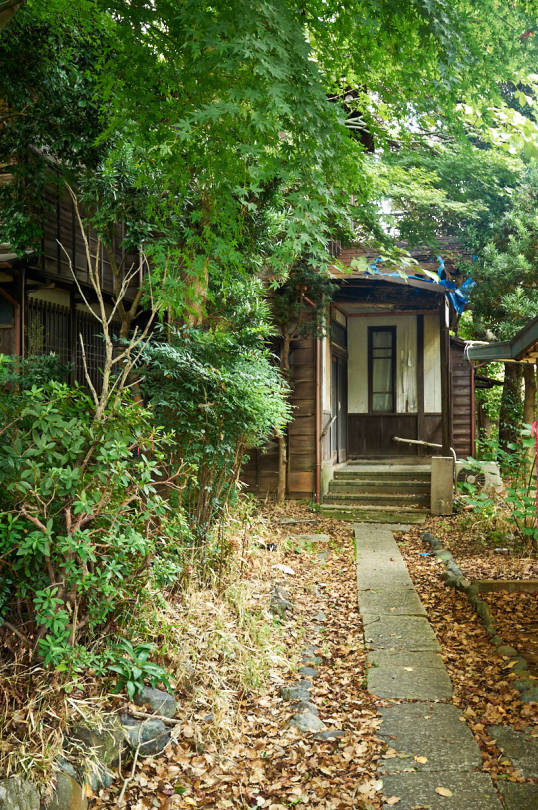
Bulldozed Fantasies:
This old Showa era house nearby was a hidden gem. Barely visible through the trees that surrounded it, it was an old wooden structure of the type disappearing in Tokyo (largely due to earthquake and fire regulations) that reminded me of something out of Tonari no Totoro. It even had signs that Meguro ward recognized some of the trees there as worthy of preservation.
Alas, as Tonari no Totoro is a fantasy, the idea that Meguro would preserve those trees, let alone the house itself is too. The last I saw of it in November, it was a cleared dirt lot with a few scraggy trees not yet removed. My fantasy---as always an absurd fantasy---of somehow living in a house like that in Tokyo took a hit. Then, observing what the January 1 earthquake in Isahikawa did to such old wooden houses with heavy tile roofs, my fantasy disappeared forever.
#japanese houses#showa era houses#original photographers#photographers on tumblr#small town tokyo#japanese architecture#japanese aesthetics#tokyo#japan#fantasies#imaginary japan
176 notes
·
View notes
Photo

Late Night in Jiyugaoka.
#original photographers#tokyo nights#japanese architecture#Japanese houses#Jiyugaoka#japan#tokyo#showa era buildings#showa era houses#urban landscape#Tokyo landscape#night scenes#lens glare#fujifilm x100 lens glare#lens coma
129 notes
·
View notes
Text
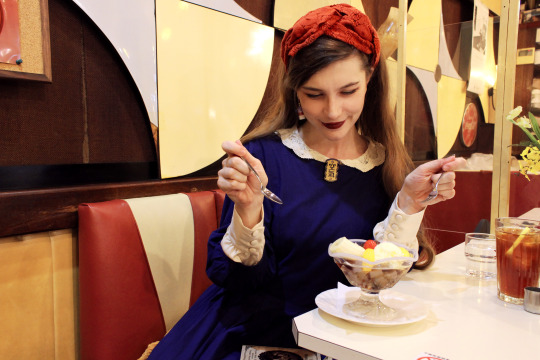
I have just created a new Tumblr blog for all my retro kissaten content from 2016 to 2022. I'll try to upload content regularly until I reach the end of my photo log. You can find it here junkissa.tumblr.com
#kissaten#kissa#retro kissa#junkissa#café#cafe#japan cafe#japan coffee houses#retro aesthetic#showa era#showa cafe#純喫茶#喫茶#喫茶店#レトロ喫茶
182 notes
·
View notes
Text







Honestly I just want to give his guy a hug. He tries so hard, boy does he try. 😭💖😭
#my cringefail blorbo#my adorable little disaster of a man#disaster husbando from kyushu#just so messy and yet so endearing#leijiverse#otoko oidon#nobotta oyama#f/o#finally read through a couple chapters again because i was making a showa era boarding house and sims of the landlady and nobotta in ts4#and then got distracted by the very manga i was using as a reference#needless to say i now have some more words in my study list#i just need to add them to anki
0 notes
Text
I’m Detective Archibald Shitpope. There’s only one thing I care about more than solving crimes: inexpensive Toyota hatchbacks.
The big boss upstairs has been tired of my incessant browsing of Craigslist at work for a long time. I get results, though, and no one else in the precinct comes close.
So when a murder case came across my desk, I did what I always do. Press F5 and see if anything under $2500 has been posted.
It took a long time to load. The precinct has shitty copper T3 back haul, and it’s always being wasted on stuff like crime scene streaming and live tracking of serial killers. That’s when I took a look at the case. And it shocked me. The murder occurred at the docks. The docks? That’s where JDM cars come from.
In dick school, they tell you that every murder has means, motive, and opportunity. There’s something else, at least for me. Toyotas. I carry a vintage トヨタ shift knob in my pocket, a sort of good luck charm. And, in contravention of department policy, my investigating car is a hammered-to-shit 2002 Celica GT (non-S) with bad ball joints, enough mileage that the digital odometer flickers in disbelief when I turn it on, and a case of sassy diff syndrome.
When I got to the scene, it was what I’d been dealing with for most of my career. A murder. I didn’t need the uniformed dipshits with their unreliable, smoggy domestic V8 squad cars to tell me that.
“It’s a classic locked room murder, boss,” said my assistant Soichiro when I finally arrived. He was born in Yonkers and legally changed his name after his hero, Soichiro Yamada, the guy who invented the cooled EGR system. “The keys are still in the vic’s pockets, so it's a mystery how someone got in there and killed him.” He walked me to a Toyota Corolla II “Windy.”
At once I knew the secret. “Soichiro, you fucked up again,” I spat with some measure of fatherly disappointment. This turbocharged, nearly-top-trim 1987 Corolla II sported the rare and desirable Panasonic parcel shelf speakers. That meant it also held the remote unlock feature, hugely uncommon for the Showa era, so much so that it would never be documented outside of the sales brochure, and certainly not in the inefficient and barbaric English literature for same.
“Turn ‘em out, Soichiro,” I ordered, pointing at his pockets, and he knew he had no choice but to comply. On the table before us lay the evidence of his treachery. One Carrozzeria branded remote lock/unlock remote, and - worse - the keys to a 1988 CR-X. He’d been on the take this whole time.
Later, the aforementioned uniformed dipshits would find something even worse on a search of a storage unit registered to my "partner," Soichiro. Four single-slammer D16 ZC engines, all matching serial numbers to the cars that went missing after the big tea house shootout in Chinatown. I’d been off that week, trying to find a replacement lift actuator, and Soichiro had filled in.
I don’t carry a sidearm. I don’t need to. I simply waited until Soichiro took flight, fleeing across the parking lot of the warehouse, and hit him with my car. Bent the upper radiator support, which the department bodyshop took care of since it was "in the line of duty." Fixed the headlight tabs, too. That probably cost Uncle Taxpayer a few cents.
I got a lot of heat for it later, from the chief, but the mayor overruled him, gave me a medal for valour. She was alright. Had a late model Tercel back home, I knew. Coupe, though, had a trunk. Politics is about compromise.
272 notes
·
View notes
Note
Lately, I've been noticing that people are comparing MV Godzilla to Doomguy and a cat. It's funny because there's one thing all three of them got in common: people misunderstanding them as violent and angry jerks who hate everything, when that just isn't the case at all.
It's also an unfortunate trend I've been noticing, and now Godzilla's getting mischaracterized to hell and back as a dumb, angry, and violent brute by these people after GvK and GxK, especially on Twitter. In worst cases, I've even seen them say that Godzilla shouldn't be a sympathetic character at all, and that he doesn't need to be because Kong's already there, and as everyone knows, mammals are supposedly "more" sympathetic and relatable than reptiles are. Even though these are all fictional characters at the end of the day, and if so many works can make you sympathize with dragons, non-humanoid robots, and even a literal talking tree-man, among many other non-human and non-mammalian characters, then what's stopping you from doing the same thing to a big nuke lizard?
Also, they act as if Godzilla has never been sympathetic in any of his previous movies before. As if the original Gojira movie, most Showa era movies, Return of Godzilla and Heisei era as a whole, Kiryu Saga (though that applies more to Kiryu himself), and even MV Godzilla's own solo movies and in Legacy of Monsters magically don't exist to these people.
(Apologies for the sorta rant there, but this is really disheartening to see. Even Matt Frank himself has joined in with saying that MV Godzilla is a jerkface and that's all what he should be.)
As if we need another reason to avoid the Wretched Hive of Media Illiteracy and Bad Takes! But if it's any consolation, this house/blog is a MV Godzilla Support Zone: We know why Godzilla behaves the way he does, and he's just as sympathetic as Kong is. Have I made the Doomguy comparison myself? Yes, but only in jest and in response to a meme that also compares Kong and Suko to Kratos and Atreus. (Y'know, from that franchise about a guy who gets angry and kills gods; the guy who, according to old memes, would see stale bread as grounds for deicide; there's a lot more to the guy than that, but not to anyone who thinks "Kratos having nuance is boring" and are so allergic to water that they won't even touch the surface of an iceberg video.) I know how to make a joke and have the required media literacy to understand there's more to these characters than surface-level dumbfuckery.
Godzilla is like Doomguy in the sense that he loves something soft and fluffy (Daisy/Mothra) and will go through bloody hell to save the world; they both harbor scars physical and mental. He is also like cats in that he may bite and scratch, but he is subtle in showing his trust. His story may not have the found family angle like Kong, but Godzilla is still a big grumpy lizard with soulful emotional eyes who saves the world and loves his moth wife very much. Anyone says otherwise, I've got a bridge to sell them.
(Matt Frank, you better be trolling or I will be very disappointed and not reblog any of your art for a while.)
20 notes
·
View notes
Text
Shoujo Manga's Golden Decade (Part 2)
Shoujo manga, comics for girls, played a pivotal role in shaping Japanese girls’ culture, and its dynamic evolution mirrors the prevailing trends and aspirations of the era. For many, this genre peaked in the 1970s. But why?
Part 1
The Year of 24 Group
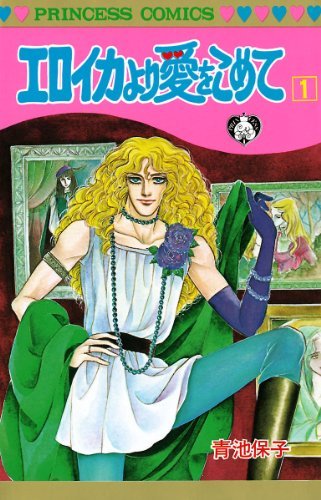
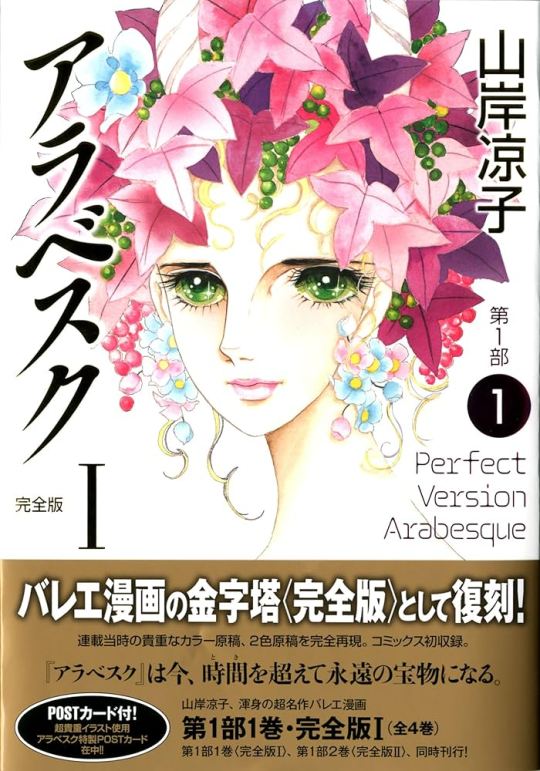
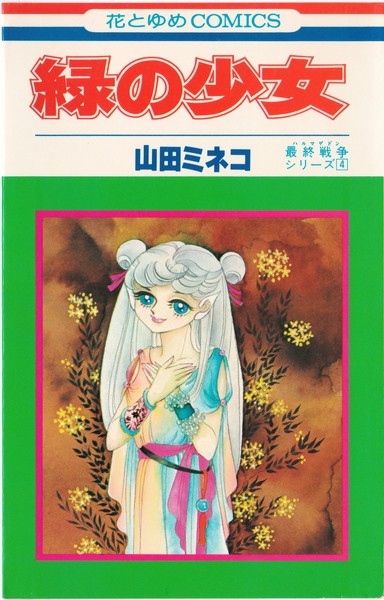

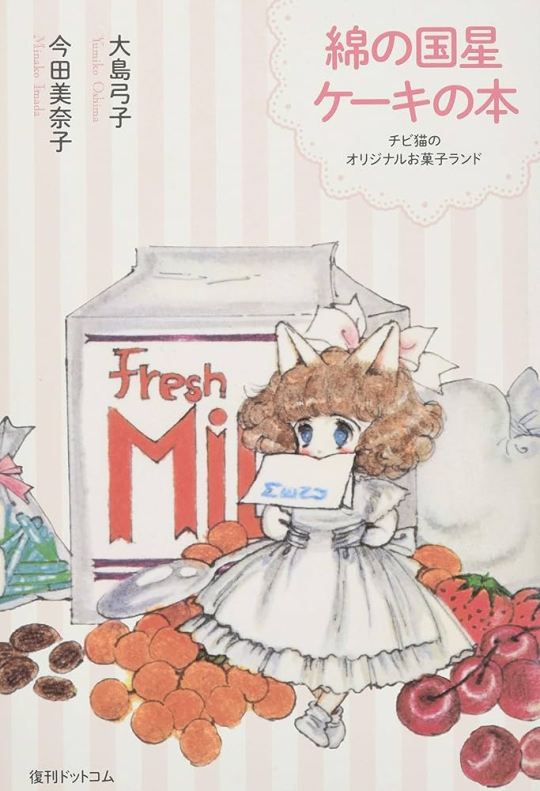

Some of the best-selling work by the Year 24 Artists (l-to-r): Yasuko Aoike's "From Eroica with Love," Ryoko Yamagishi's "Arabesque," Mineko Yamada's "Minori no Shoujo," Toshie Kihara's "Yomie no Ishibume," Yumiko Oshima's "The Star of Cottonland," Yuuko Kishi's "Tamasaburo."
Back in the early '70s, there was the prevailing notion that manga was for young kids. Despite the variety in themes, big magazines like Margaret, Shoujo Club, Nakayoshi, and Ribon were theoretically aimed at elementary school-aged girls.
In practice, the reality was more nuanced. Due to being published in Weekly Margaret, "The Rose of Versailles" was for kids. And it did very well with them. Yet, its revolutionary romance also appealed to broader audiences, exemplifying the crossover potential of shoujo manga. It was the title that opened the door for what is known as "the golden age of shoujo," which was further cemented by several other groundbreaking hits.
These hits widened the shoujo manga field, and soon, other editorial houses also wanted to cash in. Shogakukan, which published the powerful Weekly Shonen Sunday, entered the shoujo market in the late '60s. Shueisha and Shogakukan also partnered to form a keiretsu and open the Hakusensha publisher which deals mostly with shoujo manga.
That is the context in which a batch of artists known as "The Magnificent 24 Group" rose. And they were another key reason as to why '70s shoujo made such a mark. These manga-kas introduced themes such as sci-fi and homosexuality to the segment, revolutionized its art, further explored historical and terror narratives, and generally broke barriers of what was possible in shoujo manga. Their work was intellectually challenging, philosophical, and, above all, fundamental for male manga critics and connoisseurs to finally take shoujo seriously.
The Year 24 Group refers to the fact most artists were born around 1949, which is known as the year 24 of the Showa era in the Japanese calendar. These women came of age during the time artists like Hideko Mizuno were debuting and doing revolutionary work in the shoujo field, and they were eager to follow their lead. The success of unorthodox hits like "The Rose of Versailles" and the emergence of new magazines enabled them to be bold.
The two artists who led the movement are Moto Hagio and Keiko Takemiya. Their shared house in Tokyo, known as the Oizumi Salon, became a gathering place for several young artists keen on breaking new grounds for shoujo manga-kas. These women became the Year 24 group. But there were other two people, besides the artists themselves, who were just as crucial for the existence of the movement.
Firstly, there was Junya Yamamoto. Yamamoto was a young male editor at Shogakukan who had risen through the ranks of the successful Shonen Sunday weekly manga magazine. Noticing they were lagging behind Shueisha and Kodansha in the manga segment for their lack of a robust shoujo presence, the editorial house appointed Yamamoto to launch Shoujo Comic (known as Sho-Comi) in 1968 and Bessatsu Shoujo Comic (known as Betsucomi) in 1970. However, he quickly ran into an issue: most successful shoujo artists already had exclusive contracts with the competing houses, and aspiring names were vying for positions at the already established magazines.
In 1969, the "God of manga," Osamu Tezuka, introduced Yamamoto to Keiko Takemiya, then a university student living in Tokushima City. Takemiya had spent her school years dreaming of becoming a manga-ka and participated extensively in the readers' corner section of COM. COM was an avant-garde manga magazine Tezuka founded to nourish young talents and publish stories without the typical restraints of more commercial shoujo and shonen publications. In her first year of college, Takemiya won a Shueisha's Weekly Margaret newcomer competition and had a work published in the magazine. Still, she was persuaded by her parents to focus on her studies instead and to leave manga as a side hobby.
Yamamoto, in turn, was impressed with her talent and convinced her to chase her dreams. Quickly, she found work in all three publishers and started simultaneously publishing in Kodansha, Shueisha, and Shogakukan's shoujo titles.
Meanwhile, Moto Hagio also grew up enamored with the manga world. During her college years, she had a work selected by Shueisha's Bessatsu Margaret (Betsuma) through a competition, but she could not find a fixed slot in the magazine. Then, she got introduced to Kodansha's Nakayoshi editors, who were impressed by her talent. While she did start publishing short stories there, editors rejected most of her submitted work as they did not fit the magazine's mold. One day, an editor introduced her to Takemiya, who, overworked while working for several magazines, was in dire need of an assistant. The two hit off, and Takemiya, who until then had her permanent residence in far away Tokuma City but was planning a move to Tokyo, proposed they both live together. She also decided to introduce Hagio to risk-taker editor Yamamoto, who, impressed by her talent, encouraged her to pursue her path instead of trying to fit into the expected shoujo template.
Then there was Norie Masuyama, who first became acquainted with Moto Hagio before becoming Takemiya's manager. Hagio was from Fukuoka, while Masuyama was from Tokyo, but due to their similar interests, they became penpals. When Hagio first moved to Tokyo, Masuyama hosted her in her home in Oizumi. Eventually, Hagio introduced Masuyama to Takemiya, and the three of them became close. Because both were artists from outside of Tokyo, Masuyama suggested Keiko and Moto should live together, and she was the one who alerted them of a house in her Oizumi neighborhood being up for rent.
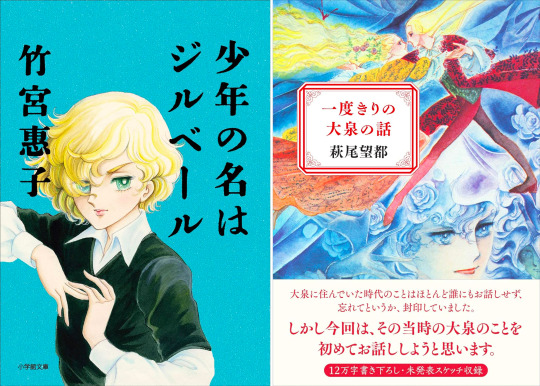
Keiko Takemiya and Moto Hagio, estranged since the late '70s, revealed details of their feud in autobiographic books: Takemiya's "Shonen no na wa Gilbert" (2019) and Hagio's "Ichidou kiri no Oizumi no Hanashi" (2021). The dispute, stemming from Takemiya accusing Hagio of plagiarism, was fueled by Takemiya's jealousy during a challenging creative and personal period. While Takemiya appears self-aware and analytical in her account, Hagio's book indicates she hasn't forgiven Keiko, revealing unresolved feelings. The publications triggered intense online debates.
Masuyama came from a sophisticated family that was very involved in arts and, from a young age, got familiarized with the world of music, literature, and movies. Her refined taste impressed Hagio and Takemiya. At a time when Japanese girls dreamed of Europe, Masuyama actually had friends living there and was up-to-date on the latest European trends. She also had a lot of knowledge of European cinema and literature.
As their rented house was old and rusty, Hagio and Takemiya started spending a lot of time at Masuayama's house across the street. She introduced them to films, songs, books, and paintings. It was Masuyama's taste -- including her interest in movies and books depicting gay romance and her desire for girls' comics to have bolder and riskier themes -- that helped to instill a passion in both artists to go further than the safe cliches usually depicted in shoujo works.
In 1970, editor Yamamoto convinced Takemiya to sign an exclusive contract with Shogakukan. The following year, Hagio also started publishing for Sho-comi and Betsucomi. Their work would attract a loyal fanbase, and aspiring manga-ka would flood their mailboxes. So Takemiya made a decision: to select female artists around her and Hagio's age to mentor and train at their shared home. Thus, the Oizumi Salon was born.
Despite attracting attention, Takemiya and Hagio's works were not always popular. In fact, they'd often rank last in readers' popularity polls, which tend to be all-deciding in manga magazines. But they persevered, and Yamamoto trusted them.

Keiko Takemiya aimed to establish herself with a top-rated series through "Pharaoh no Haka" (left) in order to garner the necessary respect from editors to write the series she wanted, "Kaze to ki no uta" (right). Despite her resolute efforts, "Pharaoh no Haka" never secured the top spot in Sho-comi's readers' poll, peaking at #2. Nevertheless, the series succeeded in elevating her fame and earning her the respect she sought.
In 1972, Hagio had an idea for a serial focused on a male European vampire. However, as she wasn't a famous artist, Yamamoto only allowed her to publish one-shots. So she came up with a plan: to write three interconnected standalone stories. To circumvent another restraint - shoujo editors' avoidance of male leads - she put the first story focus on Marybelle, Edgar's sister. Once Yamamoto realized what Hagio was doing, he was amused and allowed her to continue. And so, "The Poe Clan" series began. In 1974, Shogakukan finally started publishing their shoujo titles in compiled paperback format. In another proof of trust, Yamamoto chose Hagio's "The Poe Clan" as the first title of the Flower Comics imprint.
To everybody's surprise, "The Poe's Clan," in paperback format, was a groundbreaking success, almost instantaneously selling out its initial printing. At the time, Hagio had just started a new serialization, "The Heart of Thomas," a tragic gay love story set in an all-boys German school. As usual for her, the story wasn't all that popular with Sho-Comi's readership, and its lackluster results in the reader's poll almost got the series discontinued. But the notable success of "The Poe's Clan" tankobon assured editors, who allowed Hagio to continue the series. "The Heart of Thomas" went on to become another best-seller and a seminal shoujo title. It also attracted critical acclaim and a loyal fanbase to Moto Hagio, which in turn helped put the Year 24 artists -- who were pretty good at self-promotion -- in the spotlight.
Hagio, Takemiya, and several other "Year 24" authors drifted between being popular and underground. They had a sizable, loyal fanbase that followed them and turned several of their works into best-sellers. On the other hand, by finding a way around the usual shoujo traditions, they weren't particularly popular with the average shoujo reader, ordinary young girls across the country.
Their peculiar position forced them to be clever, so they could fulfill their creative desires as well as their editors' expectations, who were there to make sure the stories published were satisfying to the core readership. Takemiya wrote "Pharaoh no Haka," an Egypt-set romantic adventure, to be well-accepted so that she could then dedicate herself to doing what she truly wanted in "Kaze to Ki no Uta," a gay love story set in a 19th Century French boarding school.
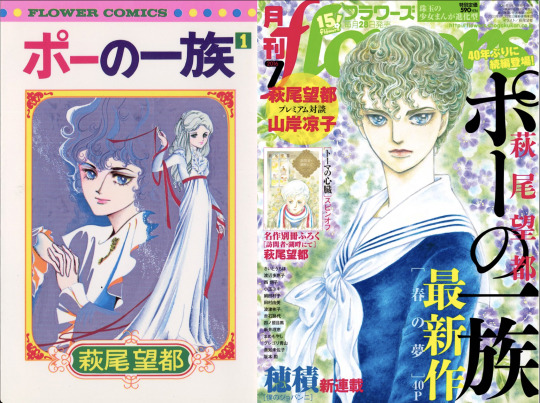
Initially overlooked in popular shoujo magazines, Moto Hagio gained success with "The Poe Clan" in compiled format, launching Shogakukan's Flower Comics imprint. Over time, she became a highly respected manga artist, the only manga-ka alongside legendary filmmaker Hayao Miyazaki to receive a Person of Cultural Merit recognition. In 2016, marking 40 years of the conclusion of her first hit, she released a new "The Poe Clan" chapter in Flower magazine, selling out the increased print run of 50,000 copies in a day. This success marked a significant shift for Hagio, who, despite not being a major magazine seller in earlier years, became a valuable asset to the struggling publishing industry. Following the one-shot, she released three more chapters and, in 2022, began a new sequel series.
Besides Takemiya and Hagio, several other notable shoujo artists who went on to become huge names used to frequent the Oizumi Salon and were part of the "Year 24 group." In the early '70s, most published their work on Shogakukan's titles, which had a "free policy" on storytelling compared to Margaret, Shoujo Friend, Nakayoshi, and Ribon. Then, as Shogakukan started being more strict to properly compete with the market leaders, several moved to newly launched Hakusensha titles Hana to Yume and LaLa. Influential names that were part of the movement included Yumiko Oshima, Yasuko Aoike, and Ryoko Yamagashi, among several others.
Despite their unorthodox preferences, they weren't necessarily trying to rebel against the system, they simply wanted to put out good quality work they believed in. Like other Japanese girls from that era, they were fascinated by Europe, and plenty of their stories took place on the continent. In 1972, Hagio, Takemiya, Yamagishi, and Masuyama made a 45-day trip to Europe, visiting the Soviet Republic, France, and several other countries, which had a profound impact on them. Still, their narratives were widely innovative. They often had male leads, introduced sci-fi, "boys' love," and other bolder genres to shoujo manga, and contributed to the evolution of shoujo illustration. Above all, this group of artists was the one who made clear to naysayers, once and for all, that shoujo manga is indeed an art form.
But while their influence in manga history is undisputed, other significant -- and much more commercial -- manga movements also shook the shoujo manga world during that decade.
A Need for Drama
When talking about '70s shoujo manga, it's common for minds to drift directly to iconic series from that time, like "Candy Candy" and "Rose of Versailles." But, unlike in present times, in that decade, the manga industry's focus wasn't on successful, long-running series but on the artists themselves.
As opposed to the struggling publishing marketing of today, major shoujo manga magazines all sold over 1 million copies during that decade. Manga in tankobon (standalone paperback) format was turning into a money-maker field, but being able to sell paperback was very much secondary compared to being a name capable of selling magazines. Keiko Takemiya and Moto Hagio, from the Amazing Year 24 Group, would go on to become household names and had best-selling series, but, at the time, they couldn't compete with the actual shoujo manga superstars who were the signboard artists of the Kodansha and Shueisha's shoujo titles, the ones who actually moved publications. These artists' work was the most significant indicator of what the mainstream readers wanted and aspired to back then.
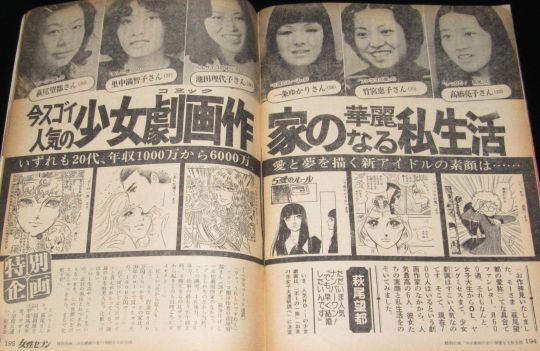
In a December/1975 issue, weekly Josei Seven spotlights the new generation of superstar shoujo manga artists: (l-to-r) Moto Hagio, Machiko Satonaka, Ryoko Ikeda, Yukari Ichijo, Keiko Takemiya, and Ryoko Takahashi. While contemporary manga-kas are highly discreet about their lives and do not even tend to show their faces, in the '70s, they were treated like superstars, and, in the article, the manga-kas openly discuss their love life and details of their high incomes, including how much they had in the bank and how much they spent on rent and daily utilities.
For Kodansha, the top shoujo artist was definitely Machiko Satonaka, who won the Best New Artist competition in 1964, when she was still a freshman in high school. There have been several high-schoolers making their debut in the industry throughout the decades, but, as the first, Satonaka caused a media frenzy. Her ascent gave confidence to countless other young women -- from "Glass Mask"'s Suzue Michi to Keiko Takemiya (who also won a smaller prize in the same competition) -- to pursue their manga careers.
The attention surrounding Satonaka, who went on to become a public personality with TV hosting gigs and other appearances, is another interesting, nostalgic phenomenon. In the past, it was common for manga superstars to have a strong media presence. Nowadays, the norm is the complete opposite: for manga-kas to be highly private, no matter how famous their work is.
In any case, Satonaka quickly proved herself to be more than a sensational news story as she created extremely popular mangas for Kodansha shoujo titles like Shoujo Friend and Nakayoshi. Her style, widely accepted by readers, became symbolical of the story-telling the '70s girls craved: extremely dramatic with emotionally driven plots and lots of bombastic twists and developments.
In his book on subcultures and otaku culture, sociologist Shinji Miyadai notes that '70s shoujo manga can be divided into very few categories. There is the category the Year 24 artists dominated -- which he defines as the "Moto Hagio domain" -- of works with a lot of artistic value, up-to-par with literature. And then there's the far more commercially viable "Satonaka domain," which represented the mainstream taste.
In the "Satonaka category," the artist depicts a stormy life story as a proxy experience for the readers. Of course, there are universal elements of love, friendship, and insecurity that girls can directly relate to. Still, these stories provide adventures that readers could never experience in the real world.
These facets of the "Satonaka domain" are present in almost all the best-selling, mainstream shoujo series of the '70s, like the revolutionary historical romance of "The Rose of Versailles," the dramatic rags-to-riches story of the beautiful orphan in "Candy Candy," and the rise of an ordinary girl to the top of the sports elite in "Ace wo Nerae." In all of these titles, you'll also spot other defining characteristics of '70s shoujo: the death of beloved characters and beloved female characters with voluminous blonde hairs and huge, sparkling eyes (a legacy of Macoto Takahashi, the illustrator who, throughout the '50s, created the art that directly influenced subsequent shoujo history).
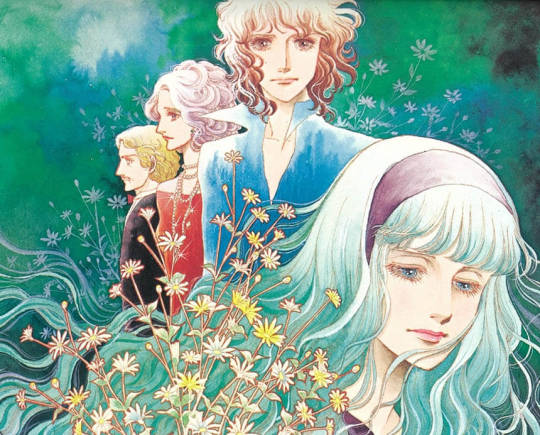
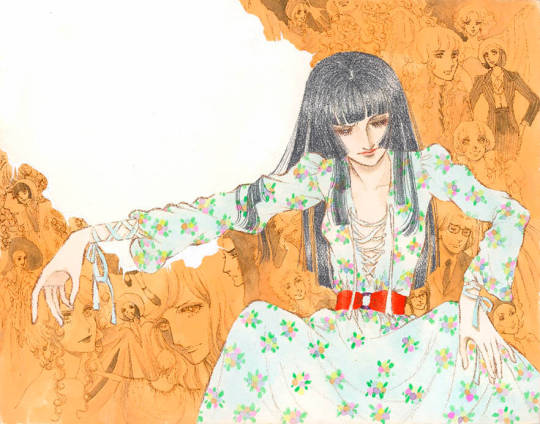
Yukari Ichijo was the most prominent Ribon signboard artist throughout the '70s, creating popular mangas like "Suna no Shiro" (left) and "Designer (right). Young girls across the country adored her work despite the adult drama in it.
Since these stories are extraordinary and dream-like, many of them use Europe or the US as their setting, another reflection of the times when Japanese youth dreamed with the West.
While Satonaka was Kodansha's star, Shueisha also had its top shoujo artists. For Margaret, it was Ryoko Ikeda who kept creating memorable dramatic manga after the conclusion of "The Rose of Versailles." Other classic '70s dramatic works published in the weekly included Kyoko Ariyoshi's ballet drama "Swan." Meanwhile, over at Ribon, no one shone brighter than Yukari Ichijo. Ichijo's works, which young girls across Japan devoured, contained a lot of adult drama with adult characters. Her 1974 manga, "Love Game," had a bed scene. One of her most celebrated works of the decade, "Suna no Shiro" (Sand Castle), dealt with incest. While Ichijo is the one who stood the test of time, another artist who also enjoyed great popularity in Ribon following this formula was Kei Nogami.
These mangas served as an escape for girls, who left their ordinary school life behind for a few hours to embark on extraordinary adventures. In contrast, one of the main genres in contemporary shoujo is unassuming, everyday high school romance. How could the shoujo segment go through such a drastic transformation? The reasons for that also dates back to the 1970s.
Part 3
#shoujo manga#vintage shoujo#otometique#yumiko oshima#keiko takemiya#yumiko tabuchi#hideko tachikake#machiko satonaka#yukari ichijo#ribon#1970s japan#1970s#year 24 group#moto hagio#vintage manga
37 notes
·
View notes
Note
Tell me about Night is Our Time 👀
It's the Yōbai AU. 🙈 I'll talk about it again anyways for other people. 🤭
Takes place in the Showa Era, about mid-60s. Naruto has a bad reputation in their small town. He smokes too much, drinks too much, brawls too much. It's pretty easy to find him in gambling halls and the like, you assume he has a problem with it.
Hinata is a good girl from a good traditional family. She's last in line to be wedded off, as all of her older and more beautiful cousins have married into good families and Hiashi is either unwilling to let her go (overprotective), or can't find a man willing to marry her.
Hinata doesn't think Naruto knows she exists until he visits her bedroom late at night when everyone is alseep.
Yōbai is the act of 'Night Crawling', walking through town at night seeking a woman to sleep with. I recommend googling more about it, as that summary does not quite capture it in its entirety.
The woman has the right to consent or deny the man.
Naturally, Hinata consents and their relationship starts from there.
And the man must leave her bedroom before the rest of the house awakens. Like a spectre in the night or some shit, lol. 🤭
17 notes
·
View notes
Text
Yukiko's "Yasogami Highschool Visualnet - H" Profile (and Kanji and Naoto's)
The Persona Club P4 book includes sections dedicated to each party member, and one of the things all of them have is a Yasogami High Facebook-esque page called the "Visualnet" with their profile, friends list, communities they've joined, etc. "Yasogami Highschool Visualnet - H" is definitely a "Someone wanted the initials to be YHVH" acronym.
To recap what the Persona Club P4 book is, it's a book made for fans by Atlus that was released back in 2009. It showcases fanart that was sent to Atlus, and provides additional character info and world building info. There is also an interview in the back of the book with Katsura Hashino about the development of the game.
I am god awful at reading handwritten Japanese, and every single character profile is written in a different Japanese font that's stylized after handwriting. I assume it's to emulate what kind of handwriting the characters would have, but... urk...
Yukiko's YHVH
Profile
Amagi Yukiko
Message: Hello! Chie invited me here.
Icon: Golden bird
Nicknames: Yukiko, Lady of the House (Ugh...)
Sex: F
Birthday: December 8, 1994
Zodiac: A heart-piercing Sagittarius. Be struck by my arrow.
Height: 164cm. Ah, the folded part of my kimono... (sweatdrop)
Weight: Secret
Blood Type: I'm a Type O who really puts the "O" in O-bvious. Betcha didn't expect that!
Celebrity Lookalike: Ami Koshimizu
Favorite Food: Japanese food! Don't call me old.
Favorite Things: Dogs. One day when I was a child, I had a fateful encounter on the Samegawa... (rest omitted)
Dislike: I don't particularly dislike anything, but... dirty talk is a bit... Uhm...
Special Skills: I'm quite confident in my kimono dressing and table manners
Brief Comment: Nice to meet you!
My YHVH (Friends)
Protagonist
Chie
Teddie
Kanji
Naoto
Ko
(See All)
Clubs
Japanese Clothing Lovers! - 6 members
The "Go Home" Club - 15 members
Showa Era Music Fans - 3 people
Let's go see the dam! - 7 people
(See All)
Messages
From Yosuke: "Let me get in the onsen again!"
(See All)
The bit about Yukiko's blood type joke is "the 'oo' in 'oozappa'"; with oozappa meaning like... roughly, generally, broadly speaking, etc. For the sake of my last remaining brain cells that haven't been Adachipilled yet, and also because I am uncreative as fuck, I just used a different word instead of trying to translate oozappa into English with a word that starts with a O lmao. The Ami Koshimizu mention is cause that's Yukiko's Japanese voice actress. All of the Investigation Team have their JP voice actors as their Celebrity Lookalikes. Also, I have no idea what the dam thing is about lol. Is there a dam if you follow the Samegawa?
Kanji and Naoto's Profiles
I've learned that Kanji and Naoto's profiles were translated back in 2009. Behold, Naoto being a member of the Linux club at school lol. The only thing I have to add-on to these existing translations is that:
Naoto's DM is from Rise, asking to go to get a "bucket parfait" - those comically large ice cream and fruit parfaits you might have seen photos of before. (I don't think they always come served in a pail / bucket, though they certainly can lol.) Not sure if Naoto secretly likes sweets (she did save the Christmas Cake...) or if Naoto gets bullied into going to this stuff by Rise all the time.
Can confirm from the Japanese version of the game that this translator's speculation about Kanji searching for the rare submarine is accurate. Kanji's Ototo and Homerun Bars are something I've written about on this blog before too.
When the mood strikes, I'll do more of these. (. ❛ ᴗ ❛.)
16 notes
·
View notes
Video
『Grandfather Energy』 por Carlos Ferran
Por Flickr:
Japan is known to keep rolling stock from the Showa era in excellent condition for use on everyday trains. For trams, the title goes to the Mo 161 series. Built in the very beginning of the Showa Era, 1928-1930's, the Mo 161's are the oldest operating streetcars used in daily service in Japan. They were operated by Nankai (later Hankai) for use on the company's streetcar system in southern Osaka. A total of 18 were built, however 5 remain in (limited) service. Due to its age, operations are limited to the cool weather months, and holidays due to no A/C. Even then, parts are nonexistent, so it's only a matter of time before the company decides to retire them completely from daily service. Here, Mo 162 pauses at Abikomichi Station as it gets ready to return to the engine house after working its morning services. Hankai Tramway Hankai Line. Hankai Mo 161 Series Shimizugaoka, Sumiyoshi Ward, Osaka
9 notes
·
View notes
Text

All this and a green bicycle too.
Somewhere in Small Town Tokyo. Just don't ask me where, I forget.
#tokyo#original photographers#japanese houses#japanese architecture#japanese aesthetics#japan#small town tokyo#showa era houses#dying showa#cliché
161 notes
·
View notes
Text

Relaxed and easy-going atmosphere at Pii.
Location: Yokohamabashi, Minami Ward, Yokohama, Japan
Timestamp: 18:48 on December 19, 2023
Fujifilm X100V with 5% diffusion filter
ISO 160 for 1.0 sec. at ƒ/5.6
Astia/Soft film simulation
Right across the alleyway from a Japanese tavern called 'Wa' is a small Thai restaurant named 'Pii.'"
Right across the alleyway from a Japanese tavern called “Wa” is a small Thai restaurant named "Pii.” Although the green signboard says it’s a curry restaurant, it's actually a Thai restaurant.
The restaurant seems to be well known among the locals for its authentic flavors and popular 600-yen lunch, which is less than $5.00 USD.
Upon peeking inside, it transported me to the late Showa era, reminiscent of old tea houses or coffee shops from the 1970s to 1989.
Unlike a typical Japanese restaurant where the staff yell out a healthy “Iraishamasse” (Welcome!), and quickly take you to your seat with a menu, the husband running this shop barely noticed my presence as he focused on a sports game on the TV while his wife was busy in the open kitchen.
Perhaps Thai culture promotes a more relaxed and easy-going atmosphere compared to the typical Japanese setting. I felt like I was popping in for a meal at an old friend’s or relative’s house! LOL!
The Yokohamabashi shotengai shopping street and the small narrow dark alleys leading off from the main drag have a visible presence of Koreans, Chinese, Thai, Filipino, Indians, and a few other foreigners whose language I wasn’t able to identify.
The small groups of other foreigners creates a multicultural ambiance in the local neighborhood where various Asians seem to work in harmony with each other to meet the needs of the local community.
Explore other shops near Yokohamabashi Shotengai, and find references to related articles for further reading on my blog post: https://www.pix4japan.com/blog/20231219-yokohamabashi
10 notes
·
View notes
Text
Tag Games
@beebee-76 tagged me for my 10 Comfort Movies! Thank you so much for the opportunity to share faves with y'all this evening!
1.

To the surprise of no one, I have to put Star Wars at the top of this list, Return of the Jedi in particular. It's my fave of the three, and always welcome on my TV.
2.

Anyone who knows me knows I'm an insane and devoted Godzilla fan, so pretty much any Godzilla movie is a comfort movie, with Showa-era Godzilla my go-to. Godzilla vs. Hedorah (or Godzilla vs. the Smog Monster, as it was called when I first saw it) is probably top of that list.
3.
youtube
I don't have words for how happy this musical makes me. Just watch um...from 10:25, that song and the choreography, showmanship, and sheer joie de vivre. It's a beautiful beautiful thing.
4.

I love him. Predator, folks, is one of my comfort movies. A masterpiece of genre filmmaking that transcends each one it tackles (sci-fi, horror, action). RIP Kevin Peter Hall.
5.

The Lost Boys. Forever a fave.
6.
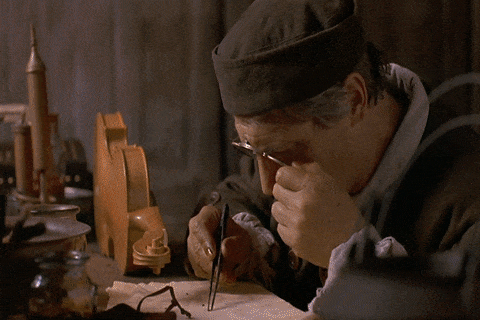
The Red Violin. A heartbreaking, perfect film with music that elevates your soul.
7.
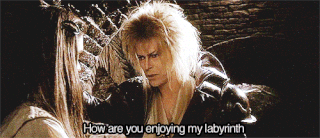
Very often and repeatedly, Jareth. 😍
8.
youtube
I have always loved Fred MacMurray, in everything from Double Indemnity to Flubber, but let it be known that nothing is as pure, as perfect, as his sentimental performance as a Scoutmaster in Disney's overlooked film Follow Me Boys. It's a holiday tradition in our house. (And YES that is baby Kurt Russell!)
9.

I love Furious 7 with a devoted and enduring passion that would make the gods envious. THIS IS A PRACTICAL EFFECT FOLKS! THEY REALLY DID THIS! James Wan understood the assignment.
10.
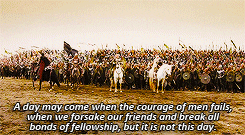
I would put the entire LOTR saga as one, but again, if forced to choose, let's go with the grand finale. I love everything about it, but most of all, like Star Wars, we have heroes who triumph over evil, and are rewarded with a happy ever after (not without scars, but nonetheless). There is still good in this world, and the unironic sincerity of filmmakers like George Lucas and Peter Jackson will forever be a comfort to me.
#thanks for the tag!#lotr#predator#the red violin#robin des bois#furious 7#godzilla#labyrinth#the lost boys#follow me boys#movies#my thoughts#this was fun
19 notes
·
View notes
Text
Saga Godzilla

Todos os filmes, animações, HQs e livros do Godzilla para download e online.
Saga completa
º Era Showa
Godzilla
Godzilla: King Of Monsters (1956)
Godzilla Raids Again
King Kong vs. Godzilla
Mothra vs. Godzilla
Ghidorah, O Monstro Tricéfalo
A Guerra dos Monstros
Godzilla Vs Ebirah
O Filho de Godzilla
Destroy All Monsters
Godzilla Revenge
Godzilla vs. Hedorah
Godzilla vs. Gigan
Godzilla vs. Megalon
Godzilla vs. Mechagodzilla
Terror de Mechagodzilla
º Zone Fighter
(série em que o Godzilla faz algumas aparições! Incluindo o Gigan e o King Ghidorah!)
º Era Heisei
O Retorno de Godzilla
Godzilla 1985
Godzilla vs. Biollante
Godzilla vs. King Ghidorah
Godzilla vs. Mothra
Godzilla vs. Mechagodzilla II
Godzilla vs. SpaceGodzilla
Godzilla vs. Destoroyah
º Era Millennium
Godzilla 2000
Godzilla vs. Megaguirus
Godzilla, Mothra and King Ghidorah: Giant Monsters All-Out Attack
Godzilla Against Mechagodzilla
Godzilla: Tokyo S.O.S.
Godzilla: Final Wars
º Monsterverse
Godzilla (2014)
Godzilla II: Rei dos Monstros (2019)
Godzilla vs Kong (2021)
Monarch: Legado de Monstros
º Era Reiwa
Shin-Godzilla
Godzilla: Planeta dos Monstros
Godzilla: Cidade no Limiar da Batalha
Godzilla: O Devorador de Planetas
Godzilla Singular Point
Conteúdo que está dublado
Godzilla Vs Biollante
Godzilla Vs King Ghidorah
Godzilla Vs Mothra (1992)
Godzilla 2000
Trilogia anime da Netflix
Godzilla (2014)
Shin-Godzilla
Godzilla II: Rei Dos Monstros
Godzilla vs Kong (2021)
Godzilla Singular Point
Godzilla - Hanna Barbera
º HQs/Mangás
Godzilla (1988)
Godzilla '94
Godzilla (2012)
Godzilla Cataclysm
Godzilla Gangsters & Goliaths
Godzilla In Hell
Godzilla Kingdom of Monsters
Godzilla Legends
Godzilla Oblivion
Godzilla Rage Across Time
Godzilla Rulers Of The Earth
Godzilla: Half-Century War
Godzilla: King Of The Monsters (Dark Horse)
Godzilla: King Of The Monsters (Marvel) (créditos para a equipe da Gibiscuits que traduziu mais da metade)
Godzilla Savior Tooth
Godzilla vs Destoroyah
Godzilla: Awekening
Godzilla: Aftershock
Godzilla: Dominion
Monster Warrior Godzilla
Godzilla vs Barkley (créditos para a equipe da Gibiscuits)
Godzilla Monsters & Protectors 1 - Rise Up
Godzilla Monsters & Protectors 2 - All Hail the King
Godzilla Rivals (em andamento)
Godzilla vs Power Rangers
Liga da Justiça vs Godzilla vs Kong
Godzilla Here There Be Dragons
º Livros
Godzilla Minus One - Novelização
A Space Godzilla - Novelização do filme não feito
Enciclopédias sobre os bastidores dos filmes e artes conceituais em japonês (Editora Mook)
Godzilla (2014) - Novelização
Godzilla II Rei dos Monstros (2019) - Novelização
Godzilla vs Kong (2021) - Novelização
Godzilla Returns (Editora Random House)
Godzilla 2000 (Editora Random House)
Godzilla no Fim do Mundo (Editora Random House)
º Curtas Oficiais
Gojira (1954) Colorizado
Bambi Meets Godzilla
Godzilla Appears at Godzilla Fest 2020
Godzilla vs Hedorah (2021)
Godzilla vs Gigan (2022)
Godzilla vs Jet Jaguar (2023)
Godzilla vs Gigan Rex
Godzilla vs Megalon 2023
ºCameos
Cena do Godzilla no Always: Senset on Third Street 2
Cenas do Snow Godzilla no Shinkalion - The Movie
Trailer de DLC e artes conceituais do Godzilla no Gigabash
Trailer de DLC do Godzilla no Minecraft
Trailer de evento do Godzilla vs Kong no Call of Duty: Warzone
Aparição de Godzilla em Os Simpsons - 30 Minutos Sobre Tóquio (S10E23)
ºTrilhas Sonoras
Godzilla - Trilhas Sonoras (por GKD)
Godzilla 50th Anniversary Soundtrack Perfect Collection
Godzilla - Pipeworks, Atari Trilogy Soundtrack
Godzilla Generations Maximum Impact Soundtrack
Godzilla (2014) Soundtrack
Godzilla (PS4) Soundtrack
Shin Godzilla Soundtrack
Godzilla Minus One Soundtrack
Shin Godzilla vs Evangelion Symphony
Godzilla Anime Trilogy Soundtrack
Godzilla King of the Monsters (2019) Soundtrack
Godzilla Monster of Monsters (NES) Soundtrack
Godzilla vs Kong (2021) Soundtrack
Godzilla Singular Point Soundtrack
Super Godzilla (SNES) Soundtrack
Godzilla - Blue Oyster Cult
Godzilla - Eminem
The Theme of Godzilla (The Best of Godzilla 1954-1975)
Dividimos a coletânea em 13 listas no Google Drive. Os filmes estão numerados em ordem.
PARTE 1
PARTE 2
PARTE 3
PARTE 4
GODZILLA: SP DUBLADO
GODZILLA: SP LEGENDADO
ZONE FIGHTER
GODZILLA HANNA BARBERA
HQS E LIVROS
CURTAS OFICIAIS
CAMEOS
TRILHA SONORA
MONARCH: LEGADO DE MONSTROS DUBLADO
6 notes
·
View notes
Photo

Showa-era House
A fortress-like house from our recent tour West. Overlooking the Ise Wan, it needs to endure regular typhoons.
36 notes
·
View notes
Text
doing schoolwork and the interpersonal communications class i have is a very nice avenue for me to force my niche interests onto everyone in class which is unavoidably incredibly funny when everyone else’s book game movie etc etc recommendations are all incredibly mainstream. none of that in this fucking house. read these early showa era authors NOW boy
#blue moon personal post#admittedly a smidge alienating but that’s just how it is#watch a film only accessible through piracy released in the 70s with a subtitle track that is incredibly tedious to find. NOW!#(referencing ‘throw away your books rally in the streets’)
2 notes
·
View notes
